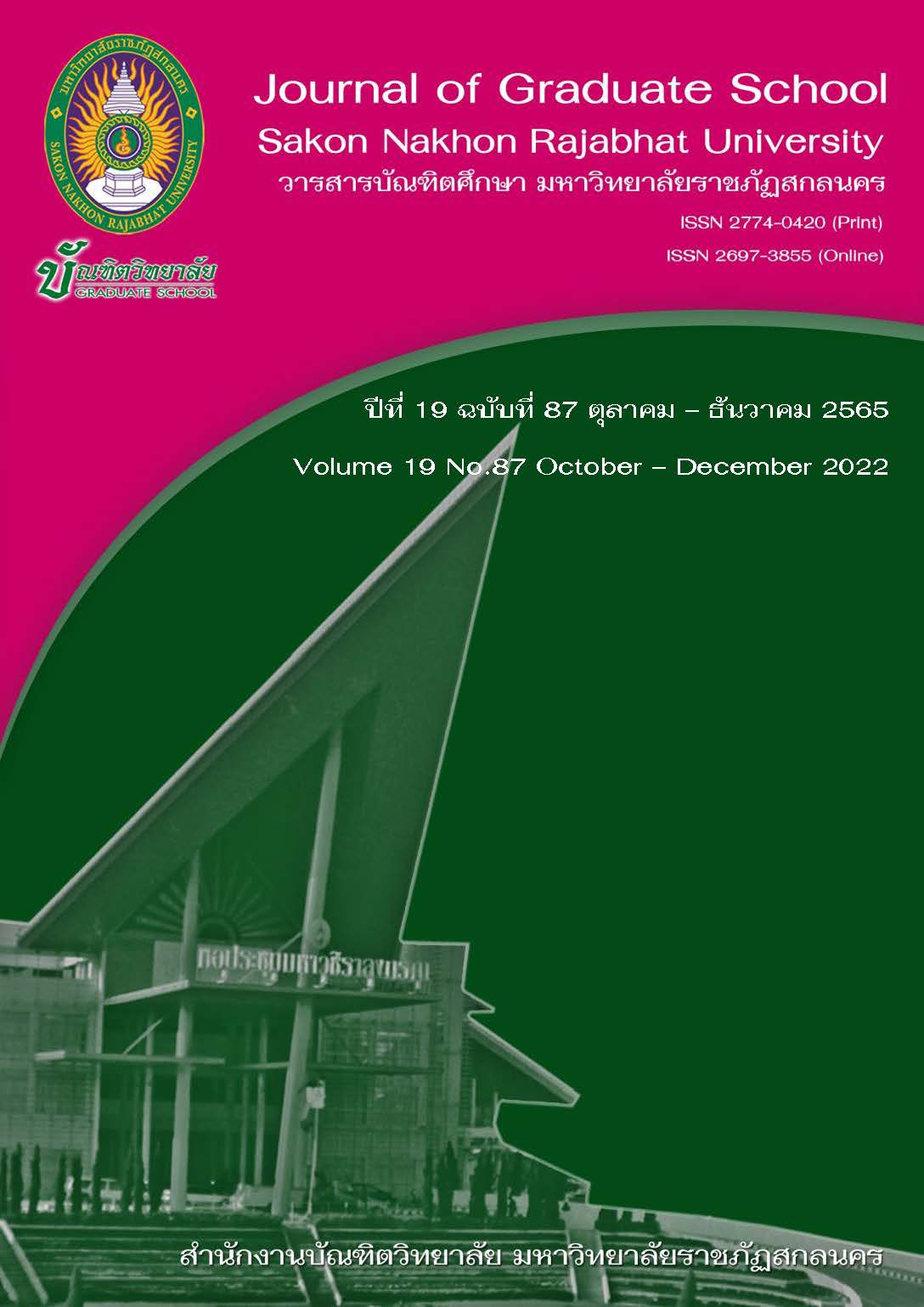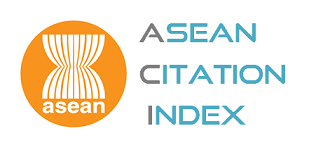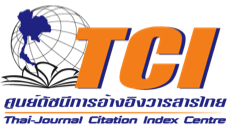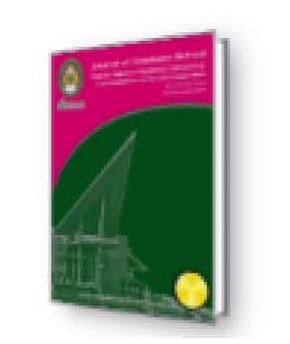ผลของการฝึกความจำขณะทำงานที่มีต่อความคิดสร้างสรรค์ของนักเรียนชั้นประถมศึกษาปีที่ 2
Keywords:
Working Memory, working memory, creative thinkingAbstract
The purposes of this research were to compare 1) creative thinking, and 2) a working memory of an experimental student group attending a working memory training and a student control group with no training. The samples were Prathomsuksa 2 students at the Udon Christian Suksa School in the second semester of the academic year 2020, divided into two groups with a total of 30 students, an experimental group consisting of 12 students and a control group consisting of 18 students. The tools for this research consisted of 1) a creative thinking test and 2) a Thai version of the Cognitive Function Battery Test for kindergarten and primary school students. The results showed that the mean scores of creative thinking and the working memory of the experimental group were higher than the control group at a .05 level of significance.
References
กรมวิชาการ. (2545). การจัดการเรียนกลุ่มสาระการเรียนรู้สังคมศึกษา ศาสนาและวัฒนธรรมตามหสักสูตรการศึกษาขั้นพื้นฐาน พุทธศักราช 2544. กรุงเทพฯ: โรงพิมพ์การศาสนา.
________. (2546). ความคิดสร้างสรรค์ หลักการ ทฤษฎี การเรียนการสอน การวัดผลประเมินผล. กรุงเทพฯ: คุรุสภาลาดพร้าว. กระทรวงศึกษาธิการ. (2544). หลักสูตรการศึกษาขั้นพื้นฐาน พุทธศักราช 2544. (พิมพ์ครั้งที่ 3). กรุงเทพฯ: โรงพิมพ์คุรุสภาลาดพร้าว.
________. (2560). หลักสูตรการศึกษาปฐมวัย พุทธศักราช 2560. กรุงเทพฯ: สำนักงานวิชาการ และมาตรฐานการศึกษา.
กิตติศักดิ์ วรรณทอง, ทัศนีย์ บุญเติม และ ปณศพร วรรณานนท์. (2556). ผลสัมฤทธิ์ทางการเรียนวิทยาศาสตร์สมรรถนะสมองเชิงพุทธิปัญญาและผลงานสร้างสรรค์ของนักเรียนที่เรียนรู้ด้วยการใช้สื่อพหุผัสสะที่ใช้ความรู้ประสาทวิทยาศึกษาศาสตร์เป็นฐานประกอบการสอน. วารสารประสาทวิทยาศาสตร์ภาคตะวันออกเฉียงเหนือ, 8(2), 56-69.
กัลยา ภู่ทอง. (2554). การพัฒนาผลการเรียนรู้ ความคิดสร้างสรรค์ และความเข้าใจที่คงทน เรื่อง สิ่งแวดล้อมรอบตัวของนักเรียนชั้นประถมศึกษาปีที่ 2 ด้วยการจัดการเรียนรู้แบบซินเนคติคส์. วิทยานิพนธ์ ศษ.ม. กรุงเทพฯ: มหาวิทยาลัยศิลปากร.
เกรียงศักดิ์ เจริญวงศ์ศักดิ์. (2546). การคิดเชิงสร้างสรรค์. กรุงเทพฯ: ซัคเซสมีเดีย.
เจนจิรา วิยาสิงห์, ไพโรจน์ เติมเตชาติพงษ์, สุวิทย์ อุปสัย, และ ยุพดี สุวรรณศร. (2560). การศึกษาความสามารถเชิงพุทธิปัญญา ความสามารถเชิง metacognition และผลสัมฤทธิ์ ทางการเรียน เรื่อง ฮอร์โมนจากต่อมไร้ท่อ ของนักเรียนชั้นมัธยมศึกษาปีที่ 4 โดยใช้รูปแบบการสอน cMEN. วารสารประสาทวิทยาศาสตร์ ภาคตะวันออกเฉียงเหนือ, 12,(4), 8-22.
นฤมล จันทร์สุขวงค์. (2551). การวิจัยและพัฒนาแผนกิจกรรมโครงงานที่ประยุกต์ใช้กระบวนการแก้ปัญหาเชิงสร้างสรรค์เพื่อพัฒนาความคิดสร้างสรรค์ ทักษะการทำงานกลุ่มและคุณภาพผลงานของนักเรียนประถมศึกษา. วิทยานิพนธ์ ศษ.ม. กรุงเทพฯ: จุฬาลงกรณ์มหาวิทยาลัย.
ดุษิต พรหมชนะ. (2562). เอกสารประกอบการอบรม“การพัฒนารูปแบบการจัดการเรียนการสอนที่ส่งเสริมกระบวนการคิดของโรงเรียนในสังกัดมูลนิธิสภาคริสตจักรในประเทศไทย” เมื่อวันที่ 16 มีนาคม 2562. ณ สำนักงานพันธกิจสภาคริสตจักรในประเทศไทย.
นิวัติ ต่อนี, ทัศนีย์ บุญเติม และ สุภาพร มัชฌิมะปุระ.(2557) ผลการใช้รูปแบบการสอนที่อาศัยแนวคิดประสาทวิทยศึกษาศาสตร์เป็นฐานที่มีต่อความตั้งใจ ความจำขณะทำงาน และความสามารถในการพัฒนานวัตกรรม. วารสารประสาทวิทยาศาสตร์ภาคตะวันออกเฉียงเหนือ, 9(3), 18-29.
ไพฑูรย์ สินลารัตน์. (2552). กลยุทธ์การขับเคลื่อนนวัตกรรมการเปลี่ยนผ่านการศึกษา “สัตตศิลา” สู่โรงเรียน. สำนักงานคณะกรรมการวิจัยแห่งชาติ. กรุงเทพฯ: คณะครุศาสตร์ จุฬาลงกรณ์มหาวิทยาลัย.
วิไล รักงาม. (2553). การเปรียบเทียบความคิดสร้างสรรค์และทักษะปฏิบัติทางการวาดภาพระบายสีของนักเรียนชั้นประถมศึกษาปีที่ 2 ระหว่างการจัดการเรียนรู้ตามแนวทฤษฎีการสร้างองค์ความรู้กับแบบวัฏจักรการเรียนรู้. วิทยานิพนธ์ ค.ม. พระนครศรีอยุธยา: มหาวิทยาลัยราชภัฏพระนครศรีอยุธยา.
สุวิทย์ อุปสัย, พรพิมล ผาพิมูล, ไพโรจน์ เติมเตชาติพงศ์ และ สุพรรณี ปูนอน. (2562). ความสามารถเชิงพุทธิปัญญา ความเครียดและผลสัมฤทธิ์ทางการเรียนทางวิทยาศาสตร์ของนักเรียนมัธยมต้นที่เกิดจากรูปแบบการสอน CMEN. วารสารประสาทวิทยาศาสตร์ ภาคตะวันออกเฉียงเหนือ, 14(2), 1-16.
สุวิทย์ อุปสัย ทัศนีย์ บุญเติม วาสนา รุ่งอนุรักษ์ และเทวินทร์ สินธุมัด. (2563). การพัฒนาแบบวัดสมรรถนะทางสมองฉบับภาษาไทยระดับอนุบาลและประถมศึกษา: ความตั้งใจและความจำขณะทำงาน. วารสารสำนักวิชาการ มหาวิทยาลัยขอนแก่น, 29(1), 36-40.
อารี พันธ์มณี. (2546). ความคิดสร้างสรรค์สู่ความเป็นเลิศ จินตนาการสำคัญกว่าความรู้. กรุงเทพฯ: ภาควิชาการแนะแนวและจิตวิทยาการศึกษา คณะศึกษาศาสตร์ มหาวิทยาลัยศรีนครินทรวิโรฒ.
Baddeley, A.D. & Hitch, G.J.L. (1974). Working Memory, In G.A. Bower (Ed.). The Psychology of Learning and Motivation: Advances in Research and Theory, 8, 47-89.
Benedek, M., Jauk, E., Sommer, M., Arendasy, M., & Neubauer, A. C. (2014). Intelligence, creativity, and cognitive control: the common and differentia involvement of executive functions in intelligence and creativity. Elsevier, 46(1), 73–83. DOI:10.1016/j.intell.2014.05.007.
Carretti B., Cornoldi C., De Beni R., & Romanò M. (2005) Updating in working memory: a comparison of good and poor comprehenders. J Exp Child Psychol, 91(1), 45-66. doi: 10.1016/j.jecp.2005.01.005. PMID: 15814095.
Ecker, L., Oberauer & Chee (2010). The Components of Working Memory Updating: An Experimental Decomposition and Individual Differences; Journal of Experimental Psychology Learning Memory and Cognition, 36(1), 170-89DOI:10.1037/a0017891.
Gilhooly, K.J., Fioratou. E., Anthony, S.H., & Wynn, V. (2007). Divergent thinking: strategies and executive involvement in generating novel uses for familiar objects. British .Journal of Psychology, 98(Pt 4), 611-625.
Oberauer, K., Süß, H-M.,Wilhelm, O. & Wittmann, W. (2003). The multiple faces of working memory: Storage, processing, supervision, and coordination. Intelligence, 31(2), 167-193. 10.5167/uzh-97155.
Morin, A. (2014). Understanding executive functioning issues. USA.: UNDERSTOOD.
Remoli, T. C., & Santos, F. H. (2017). Interactions between working memory and creativity: A systematic review. Psicologia em Estudo, 22(1), 53–65. https://doi.org/10.4025/psicolestud.v22i1.32518.
Shepherd, J., & Huganir, R., (2007). The Cell Biology of Synaptic Plasticity: AMPA Receptor Trafficking. Annual review of cell and developmental biology, 23, 613-643. 10.1146/annurev.cellbio.23.090506.123516.
Smeekens, B. A., & Kane, M. J. (2016). Working Memory Capacity, Mind Wandering, and Creative Cognition: An Individual-Differences Investigation into the Benefits of Controlled Versus Spontaneous Thought. Psychology of aesthetics, creativity, and the arts, 10(4), 389–415. https://doi.org/10.1037/aca0000046.
Southard, E. M., (2014). Examining the Relationships Among Working Memory, Creativity, and Intelligence. UNF Graduate Thesos and Dissertations, 548. https://digitalcommons.unf.edu/etd/548.
Takeuchi, H., Taki, Y., Nouchi, R., Yokoyama, R., Kotozaki, Y., Nakagawa, S., Sekiguchi, A., Iizuka, K., Hanawa, S., Araki, T., Miyauchi, C. M., Sakaki, K., Sassa, Y., Nozawa, T., Ikeda, S., Yokota, S., Magistro, D., & Kawashima, R. (2020). Originality of divergent thinking is associated with working memory–related brain activity: Evidence from a large sample study. NeuroImage, 216, Article 116825. https://doi.org/10.1016/j.neuroimage.2020.116825
Uopasai, S., Bunterm, T., Muchimapura, S., & Tang, K.N. (2017). The Effect of Working Memory
Training on the Behavioral, Electrophysiological and Achievement Change. The Turkish Online. Journal of Educational Technology – December 2017, Special Issue for INTE 2017, 331-339.
______. (2018). The Effect of Constructivism, Metacognition and Neurocognitive based Teaching: Model to Enhance Veterinary Medicine Students’ Learning Outcomes. Pertanika J. Soc. Sci. & Hum, 26(4), 2313 - 2331.
______. (2019). An Investigation on the P300 Event-related Potential and Brain Topographical Organization of Veterinary Medicine Students through Working Memory Training. International Journal of Pharmaceutical Research, 11(1), 299-305.
Downloads
Published
How to Cite
Issue
Section
License
Copyright (c) 2023 Journal of Graduate School Sakon Nakhon Rajabhat University

This work is licensed under a Creative Commons Attribution-NonCommercial-NoDerivatives 4.0 International License.
บทความทุกบทความที่ตีพิมพ์ในวารสารบัณฑิตศึกษา มหาวิทยาลัยราชภัฏสกลนคร ถือว่าเป็นลิขสิทธิ์ของบัณฑิตวิทยาลัย มหาวิทยาลัยราชภัฏสกลนคร










